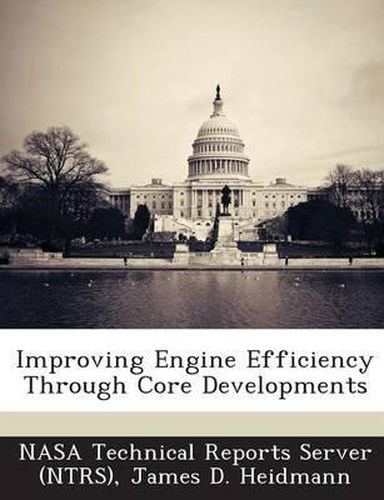Readings Newsletter
Become a Readings Member to make your shopping experience even easier.
Sign in or sign up for free!
You’re not far away from qualifying for FREE standard shipping within Australia
You’ve qualified for FREE standard shipping within Australia
The cart is loading…






The NASA Environmentally Responsible Aviation (ERA) Project and Fundamental Aeronautics Projects are supporting compressor and turbine research with the goal of reducing aircraft engine fuel burn and greenhouse gas emissions. The primary goals of this work are to increase aircraft propulsion system fuel efficiency for a given mission by increasing the overall pressure ratio (OPR) of the engine while maintaining or improving aerodynamic efficiency of these components. An additional area of work involves reducing the amount of cooling air required to cool the turbine blades while increasing the turbine inlet temperature. This is complicated by the fact that the cooling air is becoming hotter due to the increases in OPR. Various methods are being investigated to achieve these goals, ranging from improved compressor three-dimensional blade designs to improved turbine cooling hole shapes and methods. Finally, a complementary effort in improving the accuracy, range, and speed of computational fluid mechanics (CFD) methods is proceeding to better capture the physical mechanisms underlying all these problems, for the purpose of improving understanding and future designs.
$9.00 standard shipping within Australia
FREE standard shipping within Australia for orders over $100.00
Express & International shipping calculated at checkout
The NASA Environmentally Responsible Aviation (ERA) Project and Fundamental Aeronautics Projects are supporting compressor and turbine research with the goal of reducing aircraft engine fuel burn and greenhouse gas emissions. The primary goals of this work are to increase aircraft propulsion system fuel efficiency for a given mission by increasing the overall pressure ratio (OPR) of the engine while maintaining or improving aerodynamic efficiency of these components. An additional area of work involves reducing the amount of cooling air required to cool the turbine blades while increasing the turbine inlet temperature. This is complicated by the fact that the cooling air is becoming hotter due to the increases in OPR. Various methods are being investigated to achieve these goals, ranging from improved compressor three-dimensional blade designs to improved turbine cooling hole shapes and methods. Finally, a complementary effort in improving the accuracy, range, and speed of computational fluid mechanics (CFD) methods is proceeding to better capture the physical mechanisms underlying all these problems, for the purpose of improving understanding and future designs.